28 have author last names that start with N have author last names that start with N

Drawing on Woolf’s letters, journals, diaries, autobiographical essays, and fiction, Ira Nadel paints a portrait of the writer in situ, whether in the enclosed surroundings of Hyde Park Gate or the open and free-spirited environs of Gordon Square’s Bloomsbury. He shows how Woolf’s experimental style was informed by her own reading life and how her deeply sensitive understanding of history, narrative, art, and friendship were rendered in her prose. He explores the famous Bloomsbury group of intellectuals in which she was immersed as well as her relationships with fascinating figures such as Vita Sackville-West and Lady Ottoline Morrel. Nadel looks at Woolf’s attitudes toward sex and marriage, analyzes her uncertain social and political views, and, finally, offers a sensitive examination of her mental instabilities and the nervous breakdowns that would plague her for most of her life, up until her suicide in 1941.
A moving account of an exceptional writer who ushered in a new era of literature, this biography perfectly captures the intricate relationship between art and life.

Often called the father of modern philosophy, René Descartes set the intellectual agenda for seventeenth-century philosophy, mathematics, natural science, and beyond. In this critical biography, based on compelling new research, Steven Nadler follows Descartes from his early education in France to the Dutch Republic, where he lived most of his adult life, to his final months as a tutor to Queen Christina of Sweden. Along the way, Nadler shows how Descartes renewed philosophy by transforming fundamental assumptions about the cosmos, natural world, and human nature as well as how his work continues to generate new insights into many of the metaphysical and epistemological problems that engage philosophers today.

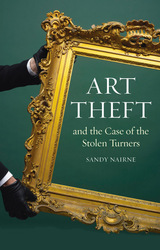
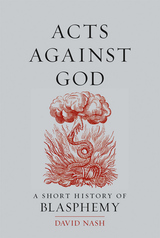
Beginning in ancient Greece and the genesis of blasphemy’s link with the state, David Nash moves on to explore blasphemy in the medieval world, where it was used both as an accusation against outsiders and as a method of crusading for piety in the West. He considers how the medieval world developed the concept of heresy as a component of disciplining its populations, the first coherent phase in state control of belief. This phenomenon reached its full flowering in the Reformation, where conformity became a fixation of confessional states. The Enlightenment created agendas of individual rights where room for religious doubt pushed blasphemy into the twilight as modern humankind hoped for its demise. But, concluding in the twenty-first century, Nash shows how individuals and the state alike now seek to adopt blasphemy as a cornerstone of identity and as the means to resist the secularization and globalization of culture.

In Dates, Nawal Nasrallah draws on her experience of growing up in the lands of ancient Mesopotamia, where the date palm was first cultivated, to explore the history behind the fruit. Dates have an important role in their arid homeland of the Middle East, where they are a dietary staple and can be consumed fresh or dried, as a snack or a dessert, and are even thought to have aphrodisiac qualities.
In this history, Nasrallah describes the central role the date palm has played in the economy of the Middle East. This informative account of the date palm’s story follows its journey from its land of origin to the far-flung regions where it is cultivated today. Along the way, Nasrallah weaves many fascinating and humorous anecdotes that explore the etymology, history, culture, religion, myths, and legends surrounding dates. For example, she explains how the tree came to be a symbol of the Tree of Life and associated with the fiery phoenix bird, the famous ancient goddess Ishtar, and the moon, and how the medjool date acquired its name.
This delightful and unusual book is generously illustrated with many beautiful images, and supplemented with more than a dozen delicious date recipes for savory dishes, sweets, and wine.
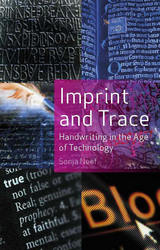
Today, writing by hand seems a nearly archaic process. Nearly all of our written communication is digital—our letters are via email or text message, our manuscripts are composed using word processors, our journals are blogs, and we sign checks to pay bills with the push of a button. Sonja Neef believes that what we have lost in our modern technological conversation is the ductus—the physical and material act of handwriting.
In Imprint and Trace Neef argues, however, that handwriting throughout its history has always been threatened with erasure. It exists in a dual state: able to be standardized, repeated, copied—much like an imprint—and yet persistently singular, original, and authentic as a trace or line. Throughout its history, from the first prehistoric handprint, through the innovations of stylus, quill, and printing press, handwriting has revealed an interweaving, ever-changing relationship between imprint and trace. Even today, in the age of the digital revolution, the trace of handwriting is still an integral part of communication, whether etched, photographed, pixelated, or scanned.
Imprint and Trace presents an essential re-evaluation of the relationships between handwriting and technology, and between the various imprints and traces that define communication.

Urgent and unsparing, this book opens our eyes to America’s new heart of darkness. Driven by an ever-expanding socioeconomic crisis, America’s class structure is recomposing itself in new geographies of race, poverty, and production. The center has fallen. Riots ricochet from city to city led by no one in particular. Anarchists smash financial centers as a resurgent far right builds power in the countryside. Drawing on his direct experience of recent popular unrest, from the Occupy movement to the wave of riots and blockades that began in Ferguson, Missouri, Phil A. Neel provides a close-up view of this landscape in all its grim but captivating detail. Inaugurating the new Field Notes series, published in association with the Brooklyn Rail, Neel’s book tells the intimate story of a life lived within America’s hinterland.

This captivating biography brings Lucas Cranach the Elder into the spotlight for the twenty-first century. The illuminating narrative unveils an artist whose vision transcended personal brilliance as he sought to elevate a nascent nation and foster a sense of community with his work. Perhaps Cranach’s most remarkable achievement lay in forging a robust Lutheran community, endowed with a resounding message of salvation. Using prints (the prevailing medium of mass communication) and multiple versions of paintings, he developed an intricate symbolism that resonated with the populace in early modern Germany. Jennifer Nelson also explores his extensive repertoire of female nudes and shows how these seductive artworks not only tantalized his patrons but constructed for them a deep history of Germany’s notional connections with ancient Greece and Rome.
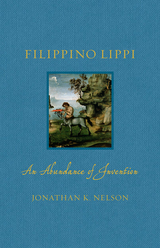
The first focused study of Filippino Lippi in a generation, and the first in English in over eighty years, this book presents a new understanding of the Renaissance master-artist. Celebrated as “ingenious” by Vasari in 1550, Filippino was highly praised and influential, then fell out of favor and was forgotten for centuries. He was rediscovered by the poet Swinburne, who in 1868 celebrated the painter’s “inventive enjoyment and indefatigable fancy.” In a similar spirit, this volume explores Filippino’s creativity in solving artistic problems. If a Roman cardinal requested a classically inspired work or a Florentine humanist wanted to dazzle observers with his antiquarian interests, Filippino had the sensitivity to understand these diverse needs and express them with highly original solutions.
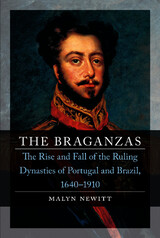
In his fascinating reappraisal of the Braganza dynasty, Malyn Newitt traces the rise and fall of one of the world’s most important royal families. He introduces us to a colorful cast of innovators, revolutionaries, villains, heroes, and charlatans, from the absolutist Dom Miguel to the “Soldier King” Dom Pedro I, and recounts in vivid detail the major social, economic, and political events that defined their rule. Featuring an extensive selection of artworks and photographs, Newitt’s book offers a timely look at Britain’s “oldest ally” and the role of monarchy in the early modern European world.
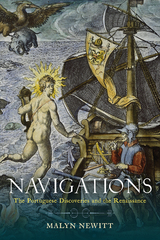
The lasting impact of historic Portuguese voyages of discovery is unquestionable. The slave trade, the diaspora of the Sephardic Jews, and the intercontinental spread of plants and animals all make clear these voyages’ long-term global significance. Navigations reexamines these Portuguese quests by placing them in their medieval and Renaissance settings. It shows how these voyages grew out of a crusading ethos, as well as long-distance trade with Asia and Africa and developments in map-making and ship design. Malyn Newitt also narrates these voyages of discovery in the framework of Portuguese politics, describing the role of the Portuguese ruling dynasty—including its female members—in the flowering of the Portuguese Renaissance, the creation of the Renaissance state with its distinctive ideology, and in the cultural changes that took place within a wider European context.
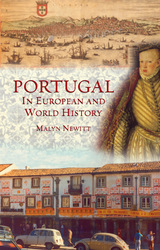
Despite its modest size, Portugal has played a major part in the development of Europe and the modern world. In Portugal in European and World History Malyn Newitt offers a fresh appraisal of Portuguese history and its role in the world—from early Moorish times to the English Alliance of 1650–1900 and through the country’s liberal revolution in 1974.
Newitt specifically examines episodes where Portugal was a key player or innovator in history. Chapters focus on such topics as Moorish Portugal, describing the cultural impact of contact with the Moors—one of the oldest points of contact between Western Europe and Islam; the opening up of trade with western Africa; and the explorations of Vasco de Gama and the evolution of Portugal as the first commercial empire of modern times. Newitt also examines Portugal’s role in the Counter-reformation, in Spain’s wars in Europe, and in the Anglo-Portuguese alliance. Finally, Newitt analyzes the fall of fascism and the Portuguese decolonization within the context of larger global empires and movements.
This new account of a country with a rich historyshows how Portugal has moved from being the last colonial power to one of the most enthusiastic proponents of the modern European ideal.
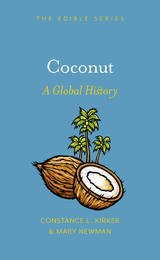
The flavor and image of the coconut are universally recognizable, conjuring up sweet, exotic pleasures. Called the “Swiss army knife” of the plant world, the versatile coconut can be an essential ingredient in savory curries, or a sacred element in Hindu rituals or Polynesian kava ceremonies. Coconut’s culinary credentials extend far beyond a sprinkling on a fabulous layer cake or cream pie to include products such as coconut vinegar, coconut sugar, coconut flour, and coconut oil. Complete with recipes, this book explores the global history of coconut from its ancient origins to its recent elevation to super-food status.

Edible Flowers is the fascinating history of how flowers have been used in cooking, from ancient Greek dishes to the today’s molecular gastronomy and farm-to-table restaurants. Looking at flowers’ natural qualities: their unique and beautiful appearance, their pungent fragrance, and their surprisingly good taste, Kirker and Newman proffer a bouquet of dishes—from soups to stews to desserts to beverages—that use them in interesting ways. Tying this culinary history into a larger cultural one, they show how flowers’ cultural, symbolic, and religious connotations have added value and meaning to dishes in daily life and special occasions. From fried squash blossoms to marigold dressings, this book rediscovers the flower not just as something beautiful but as something absolutely delicious.
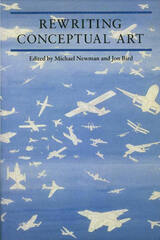
Investigating and documenting the histories, theories and forms of Conceptual Art, this timely book, including both established writers and a new generation of art historians, shows that Conceptual Art was a broad movement encompassing a range of artistic tendencies. This is the most stimulating account of the movement to date, arguing forcefully for its vitality and potential as well as examining its influence on art today.
With essays by Alex Alberro, Stephen Bann, Jon Bird, David Campany, Helen Molesworth, Michael Newman, Peter Osborne, Birgit Pelzer, Desa Philipagesi, Anne Rorimer, Peter Wollen and William Wood.

An encyclopedic, illustrated history of film idols ready for their close-ups, Show People is ultimately a book about cinephilia, the love of cinema, and our complex connection to that celebrated and beleaguered figure, the movie star.

Galileo, Leonardo, Newton, and Tesla revered him: Archimedes of Syracuse—an engineer who single-handedly defied the world’s most powerful army and a mathematician who knew more in 212 BCE than all of Europe would know for the next seventeen centuries. In this bold reimagining, modern polymath Nicholas Nicastro shines a new light on Archimedes’ life and work. Far from the aloof, physically inept figure of historical myth, Archimedes is revealed to be an ambitious, combative, and fiercely competitive man. A genius who challenged an empire, Archimedes emerges in this book as the world’s first fully modern scientist—millennia before his intellectual descendants transformed our world.
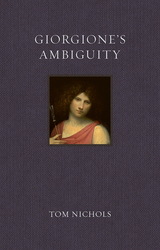
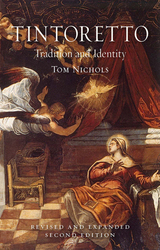
This generously illustrated book offers an extensive analysis of Tintoretto’s greatest paintings, charting his life and work in the context of Venetian art and the culture of the Cinquecento. Tom Nichols shows that Tintoretto was an extraordinarily innovative artist who created a new manner of painting, which, for all of its originality and sophistication, was still able to appeal to the shared emotions of the widest possible audience. This compact, pocket edition features sixteen additional illustrations and a new afterword by the author, and it will continue to be one of the definitive treatments of this once grossly overlooked master.
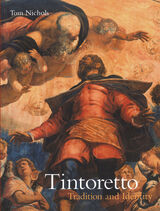
This generously illustrated book offers a long-overdue re-evaluation of Tintoretto. Tom Nichols charts the artist's life and work in the context of Venetian art and the culture of the Cinquecento. He shows how the artist created a new manner of painting, which for all its originality and sophistication made its first appeal to the shared emotions of the widest-possible viewing audience. The book deals extensively with Tintoretto's greatest works, including the paintings at the Scuola di San Rocco in Venice.

Ranging widely across Titian’s long career and varied works, Titian and the End of the Venetian Renaissance outlines his radical innovations to the traditional Venetian altarpiece; his transformation of portraits into artistic creations; and his meteoric breakout from the confines of artistic culture in Venice. Nichols explores how Titian challenged the city’s communal values with his competitive professional identity, contending that his intensely personalized way of painting resulted in a departure that effectively brought an end to the Renaissance tradition of painting. Packed with 170 illustrations, this groundbreaking book will change the way people look at Titian and Venetian art history.

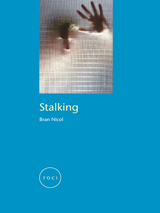
It scares—and titillates—in such movies as The Hand That Rocks the Cradle and Basic Instinct. It violently ended the lives of legendary artists such as Selena and John Lennon, and thousands of people endure it daily in anonymity from ex-lovers and strangers. Stalking has been a fact of human society for a surprisingly long time, yet it is only in the last two decades that the term “stalking” came into wide use throughout mass culture. Bran Nicol traces here the history of stalking and chronicles how acts of extreme obsession have created a public fixation of their own.
This unprecedented study draws on a wealth of sources—including forensic psychology, films, literature, news reports, and cultural theory—to examine stalking as a behavior and a social phenomenon. Moving from Samuel Richardson’s Clarissa to Fatal Attraction and from Charles Dickens’s Our Mutual Friend to Taxi Driver and One Hour Photo, Nicol skillfully probes how stalking has pervaded our civilizatoin for over two hundred years. He then turns his focus to the role that stalking plays in the context of our contemporary media-saturated culture, posing provocative questions about the state of modern society: Have interpersonal relations become increasingly intense or more perverse today? Are we dealing with something truly new, or is stalking simply the latest name for an age-old form of social interaction? Stalking also examines cases of deadly obsession with celebrities, such as Jodie Foster, and explores how such fixations are fueled by mass media and the Internet.
A wholly fascinating and groundbreaking investigation into one of the extreme consequences of our hyper-connected age, Stalking provides a thorough understanding of this disturbingly compelling abnormality.

The English Table is a delectable journey through the culinary history of England from ancient times to the present day. The book sheds light on the evolution of English cuisine, which essentially was the food of the rich—the poor had to manage as best they could until the twentieth century. Unveiling the secrets hidden in period cookery books, from the earliest known recipe scroll in the fourteenth century to modern classics such as Jane Grigson’s English Food, each chapter is a culinary time capsule. The book features carefully curated recipes from each era and offers a mouth-watering glimpse into the flavors that have shaped English culinary heritage.

Nowak traces the truffle’s journey from the kitchens of East Asia to those of Europe and the Americas. Balancing cultural, historical, and scientific perspectives, he offers a thorough and complete portrait of this many-sided mushroom. By comparing the truffle’s history in the Old World with its growing prominence in the New World, he tells a larger story of the growth and dynamism of modern Western cuisine and food cultures. Featuring many instructive and surprising illustrations, and numerous recipes both historical and contemporary, this unique and fascinating book is a must-read for chefs, food historians, and anyone ever drawn by the truffle’s mysterious, rich, and savory allure.
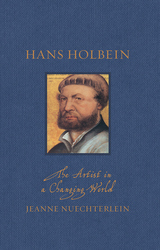
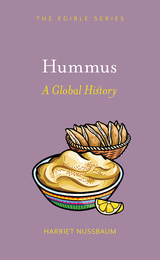
This is a global history of hummus bi-tahina, the delicious combination of chickpeas, tahini, lemon, and garlic that we know and love as hummus. The story begins in the medieval kitchens of the Near and Middle East and culminates with hummus’s rise in popularity in the Western world at the end of the twentieth century. This book also addresses the international controversy over ownership of the dish and illustrates the extent to which hummus has been embraced by Western food culture today. Though other Mediterranean dishes have become popular in the West, none can be compared to hummus, which can be found in any supermarket and in vast numbers of eating establishments. Hummus has become a global phenomenon and our very favorite dip.
READERS
Browse our collection.
PUBLISHERS
See BiblioVault's publisher services.
STUDENT SERVICES
Files for college accessibility offices.
UChicago Accessibility Resources
home | accessibility | search | about | contact us
BiblioVault ® 2001 - 2024
The University of Chicago Press









